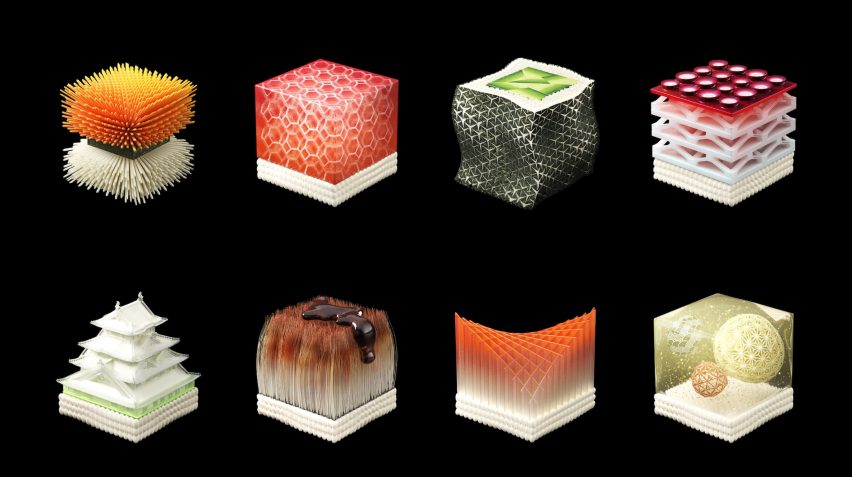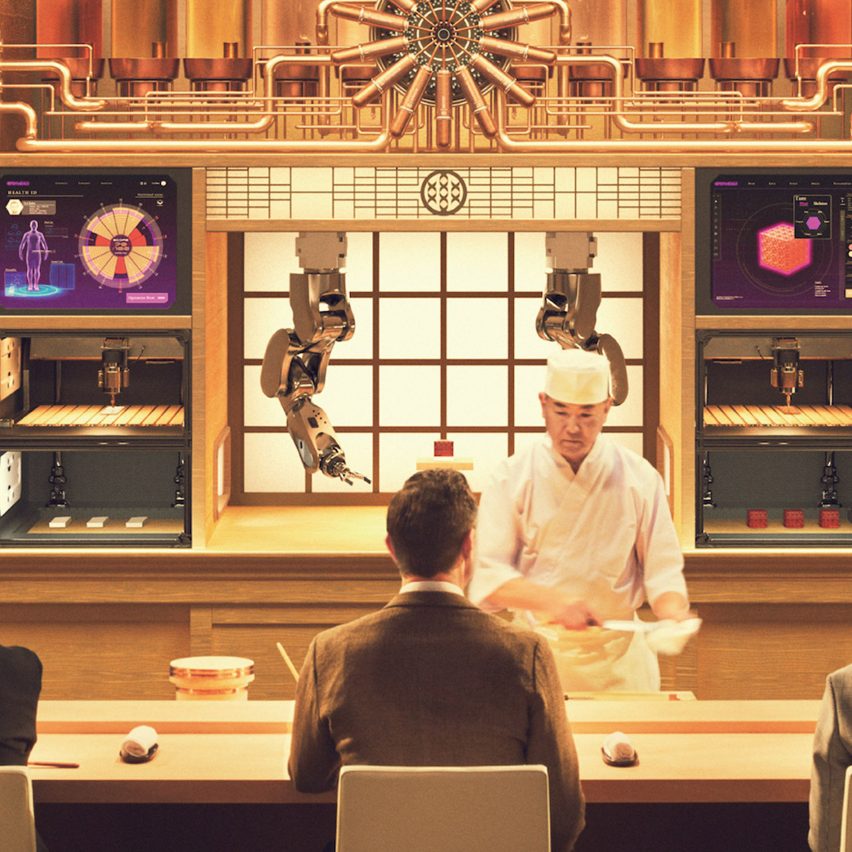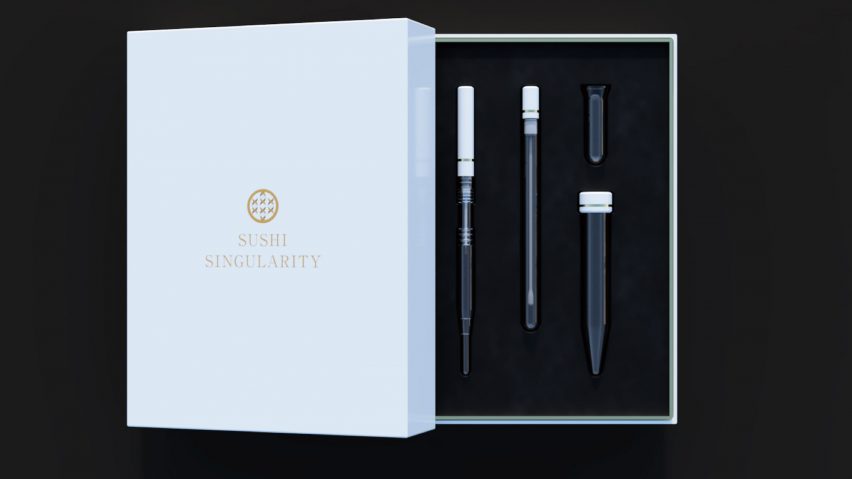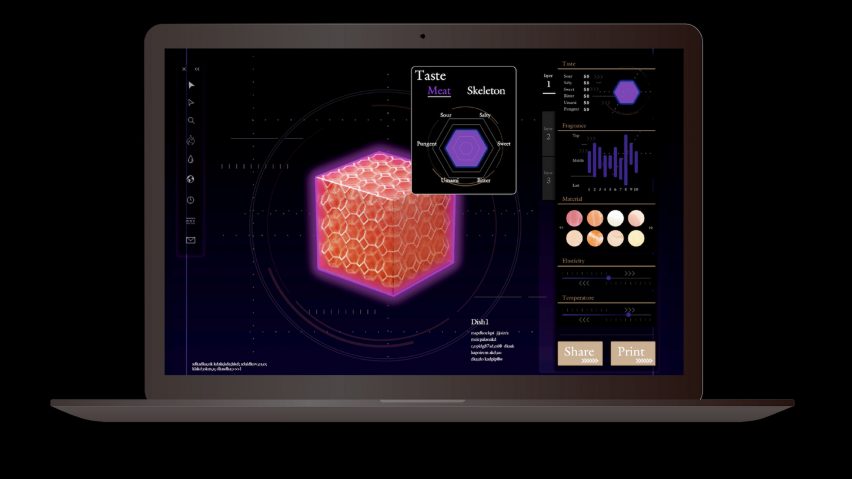
Sushi Singularity makes a bespoke dinner based on your bodily fluids
Japanese conceptual design studio Open Meals has announced a restaurant concept that will use a customer's saliva, faeces and urine to create 3D-printed sushi tailored to their nutritional needs.
Called Sushi Singularity, the restaurant is due to open in Tokyo in 2020. It will use a customer's biological samples – sent in advance of the meal – to evaluate their nutritional requirements.
This data will be used to inform what nutrients are incorporated into the individual's serving of sushi.

"Hyper-personalisation will become common for future foods. Based on DNA, urine and intestinal tests, people will each have individual health IDs," said Open Meals.
"This identity is analysed, and nutritional matching is performed to match nourishment needs with biometrics, thus the person is automatically provided with the optical diet," explained the brand.
Once a reservation is booked, the restaurant will send guests a health-test kit to return approximately two weeks prior to the date of the meal.
Working in partnership with two health-technology companies, Open Meals will use the results of these tests to create a unique health ID for each visitor.

"One company examines a sample of urine to figure out the nutrition status of your body and the other tests gut flora and figures out which food would improve your gut conditions," Open Meals told Dezeen.
The unique health ID, which contains the individual's biodata, will be uploaded onto machines that will create bespoke sushi with nutrients that the individual is lacking.
Although Open Meals has not yet determined the precise method to construct the sushi, a series of industrial mechanisms, including a CNC machine, a 3D printer and robotic arms will allegedly be used to build the sushi, which feature intricate shapes and textures.

"There will be 14 cylinders with different nutrients attached to the food-fabrication machine and when it 3D prints a dish of sushi, for example, some nutrients that are necessary for the customer will be added automatically," said Open Meals.
"We are still working on how they are added. One way is to mix them into the ingredients. Another possibility is to add them as a source of the sushi," the brand told Dezeen.
As advances in technology become more readily available, an increasing number of designers are working on the future of food design.
The first steak grown in a laboratory from cow cells as a meat alternative was developed in December last year, while Novameat invented the "world's first" 3D-printed meat-free steak made from vegetable proteins.